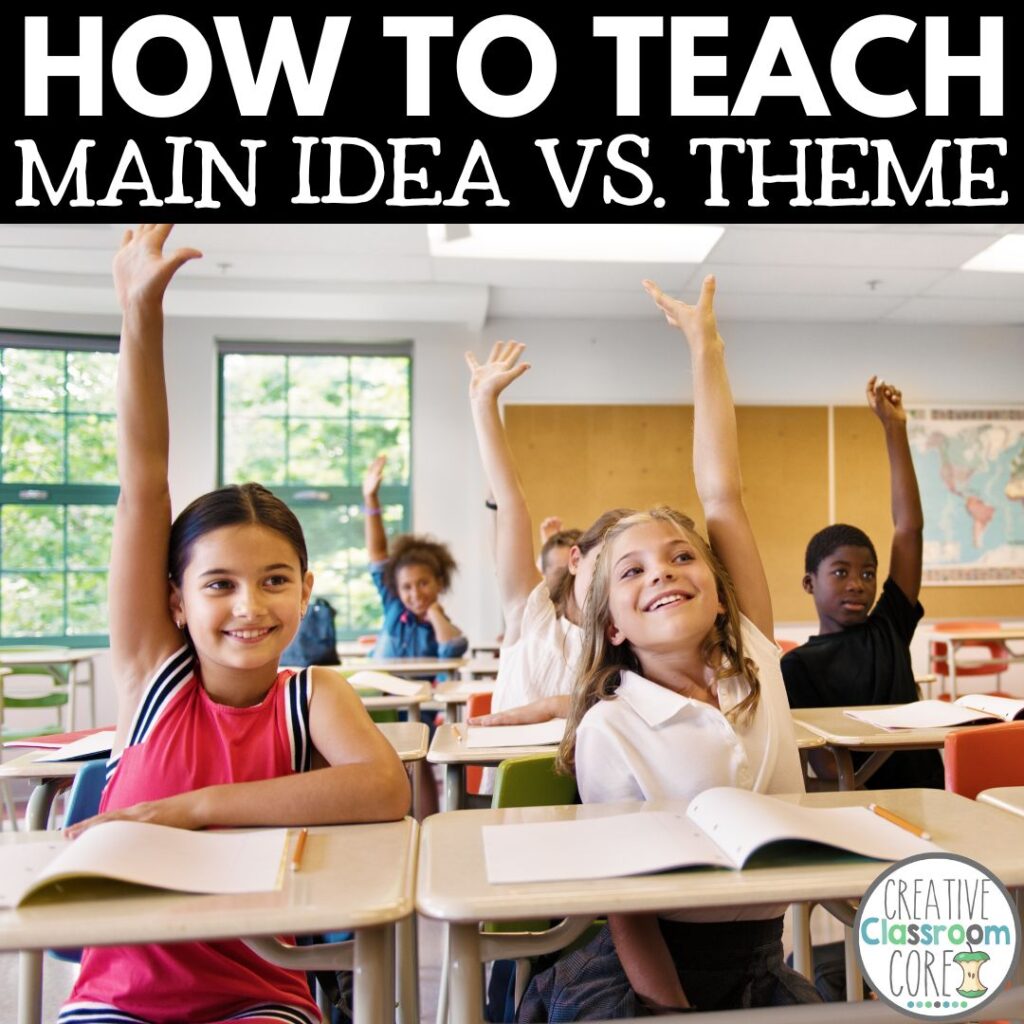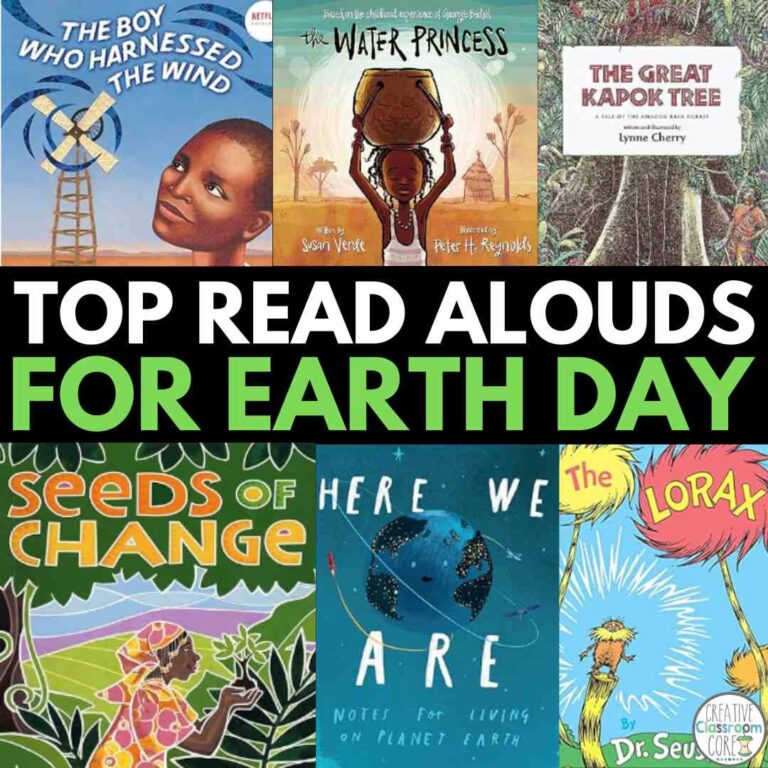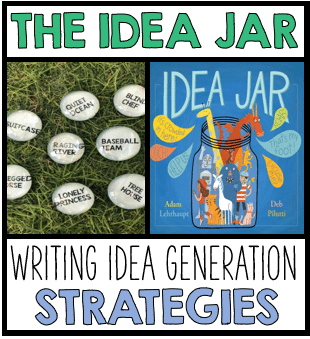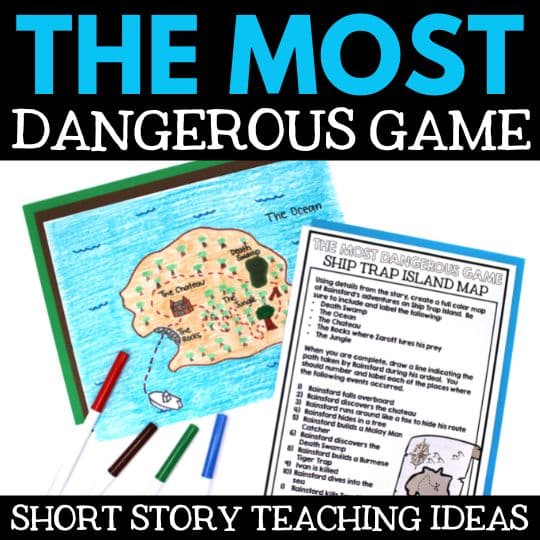What is the Main Idea?
By MARISSA DESPINS Updated April 29, 2024
Understanding Main Idea Vs. Themes
Understanding main idea vs. theme is very important for developing reading comprehension skills in upper elementary and middle school students. While these concepts may seem similar at first glance, they serve distinct roles in literary analysis. This post will break down what the main idea and theme are, explain how they differ, and offer practical tips for teaching these concepts effectively.
On the hunt for some no-prep resources to help your students with reading comprehension? Click on the image or button below to see all of the reading resources available in my TPT shop!
DEFINING THE CENTRAL Idea
Before students can analyze texts in effective ways, they need to have a clear understanding of main idea vs. theme. Read on as we define each term and explore their significance in reading comprehension.
The main idea of a text refers to the primary point or argument that the author wants to express. It is usually centered around what is happening and who is involved, often summarized in a single sentence. In informational texts, the main idea can be about a fact or a set of related facts that the author presents about a topic.
What is the Theme?
Unlike the main idea, the theme of a text deals with the underlying messages or broader insights about life and human nature. Themes are usually universal, meaning they can resonate with a wide variety of different audiences and are applicable in various contexts beyond the story. Themes are not stated explicitly but are inferred through character actions, dialogue, and the resolution of conflicts.
How do Main Idea and Theme Differ?
While the main idea is specific to the text and its contents, the theme is more about the lessons or moral insights that can be drawn from the story.
The main idea can be seen as the foundation of what the text is about, while the theme is what the reader takes away as a deeper message.
Why Should I Teach These Concepts
Teaching students to tell the difference between main idea and theme is important because it enhances their ability to interpret texts in ways that are deep and meaningful. This skill can improve academic performance across subjects. Also, it aids students’ understanding of the world and their place in it. Recognizing these elements helps students engage more thoughtfully with texts. It also promotes critical thinking and analytical skills.
Suggestions for Teaching Main Idea
Here are some strategies to help your students understand and differentiate between the main idea and the theme:
- Use Graphic Organizers: Employ Venn diagrams or T-charts to compare and contrast the main idea and the theme of a text. These visual tools can help students organize their thoughts and better understand the differences.
- Text Examples: Provide multiple short texts and ask students to identify the main idea and the theme of each one. Discuss as a class why these are different and what clues helped them reach their conclusions.
- Group Discussions: After reading a story, organize small group discussions to explore its main ideas and themes. Encourage students to support their opinions with
- Interactive Read-Alouds: During read-aloud sessions, pause to ask questions about the main idea and the theme. This practice encourages real-time analytical thinking and helps reinforce the differences between the two concepts. For more information about Interactive Read alouds, check out our complete guide!
- Role-Playing: Have students act out parts of the text to explore the theme. Role-playing can help students understand characters’ motivations and actions, which often lead to discussions about the theme.
Wrapping Things Up
Understanding the main idea and theme enhances students’ reading comprehension. It also helps to prepare them for more advanced literary analysis. By integrating these teaching strategies into your curriculum, you ensure that your students master these essential concepts. Regular practice will make distinguishing between main idea and theme second nature to them.
For additional information on reading strategies, be sure to check out our reading comprehension strategy guide!
Interested in some no-Prep Resources for teaching Main Idea?
Click on the image or button below to snag this resource from my TPT shop!
Looking for some free resources to practice reading comprehension?
Grab this full set of Reading Comprehension Practice Pages by clicking on the image below!
Interested in reading more about reading comprehension strategies?
Check out some of my previous posts below.
Building Reading Comprehension Strategies
Visualization Strategies for Reading Comprehension
Text Mapping to aid Reading Comprehension
Questioning Strategies for Reading Comprehension
Interested in signing up for my email list?
If you are interested in signing up for my email list, you can do so by clicking on the link below. I periodically send out emails with free resources, teaching tips, and exclusive deals. Signing up will also give you immediate access to some of my best selling Interactive Notebook resources – foldable activities, graphic organizers, and other fun activities.









